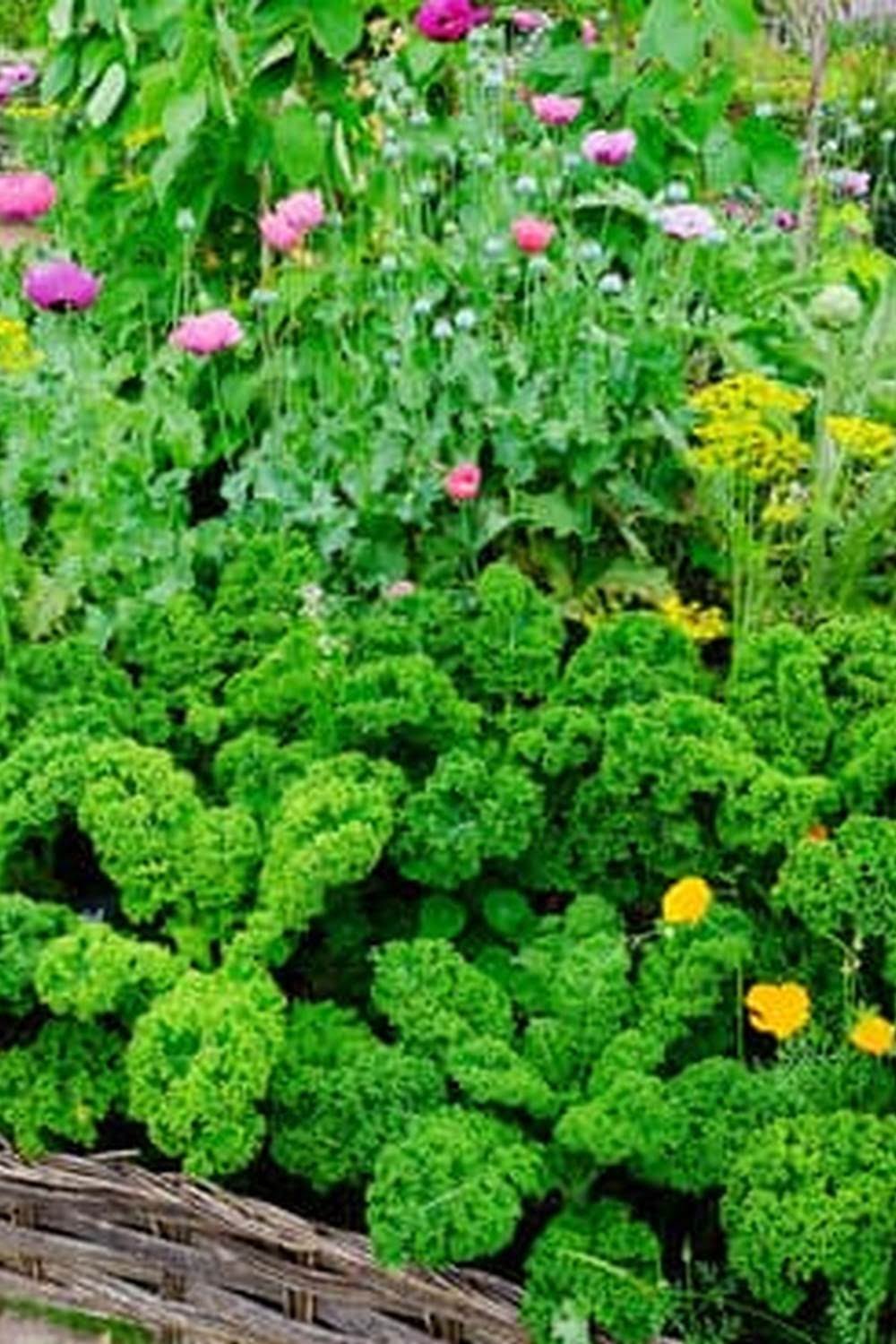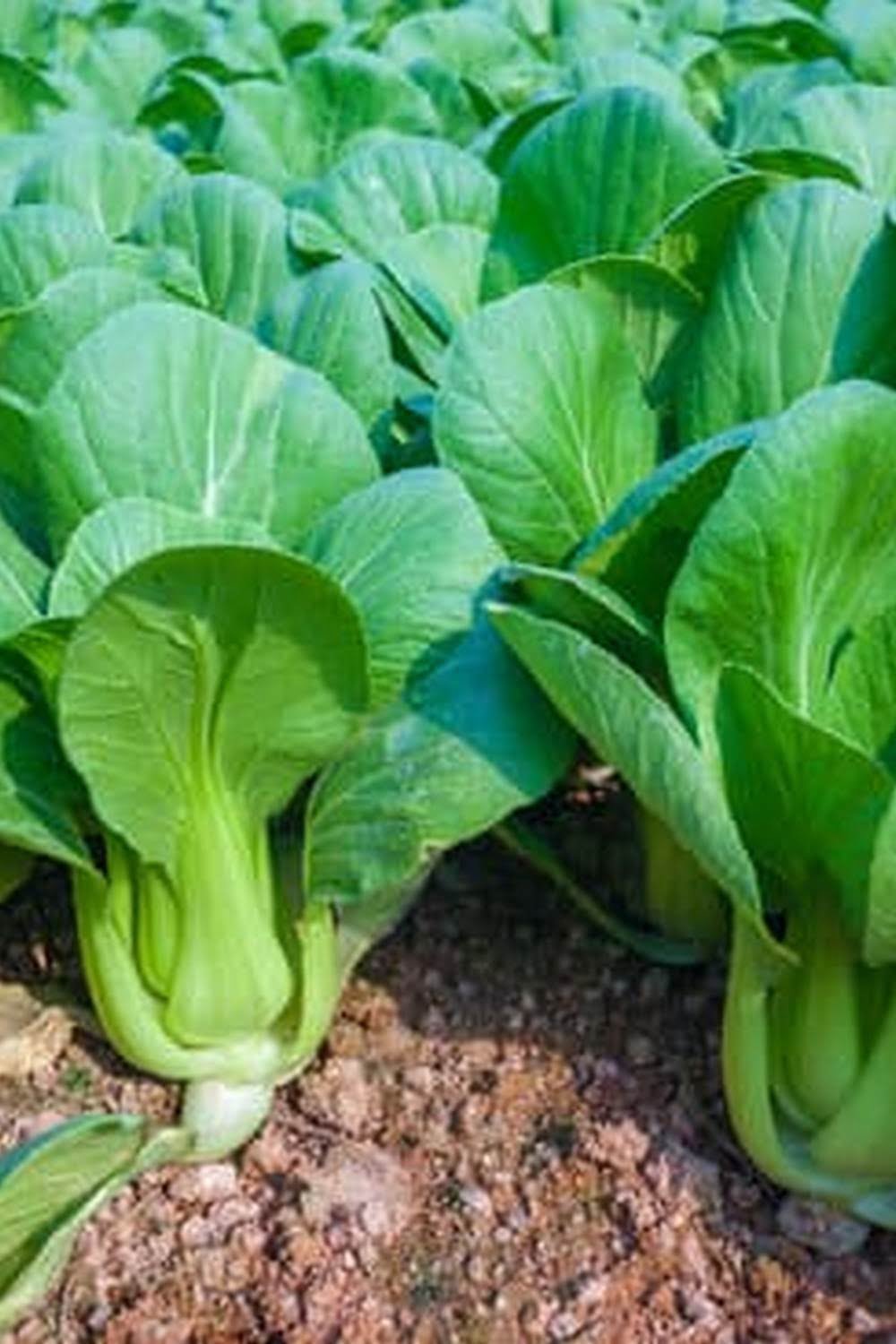Are you considering starting an organic vegetable garden in raised beds? Organic gardening raised bed vegetable garden is a sustainable and effective way to grow your own produce at home. By utilizing raised beds, you can create a thriving garden that is manageable, productive, and environmentally friendly.
Raised bed gardening offers numerous benefits for both beginner and experienced gardeners. Not only does it provide better drainage and soil structure, but it also makes it easier to control weeds and pests. This section will guide you through the process of creating and maintaining an organic raised bed vegetable garden, from choosing the right location to harvesting and enjoying the fruits of your labor.
In the following paragraphs, we will discuss the advantages of raised bed gardening, how to choose the perfect location for your vegetable garden, as well as building and filling your raised bed with organic soil. Whether you have limited space or poor soil quality, this article will show you how to embrace sustainable and organic living through the art of raised bed gardening.
Benefits of Raised Bed Gardening
Improved Drainage and Soil Quality
One of the main benefits of raised bed gardening is the improved drainage and soil quality it provides. The elevated nature of raised beds allows for better water drainage, preventing waterlogging and root rot. Additionally, gardeners have more control over the type and quality of soil used in raised beds, leading to healthier and more productive plants.
Reduced Weeding and Maintenance
Raised bed gardens also require less weeding and maintenance compared to traditional in-ground gardens. The defined borders of raised beds make it easier to identify and remove weeds, while the loose, well-aerated soil discourages weed growth. Furthermore, the elevated nature of raised beds means less bending over or kneeling down, making it more accessible and comfortable for gardeners to tend to their plants.
Optimal Growing Conditions
The height of raised beds creates optimal growing conditions for vegetables by allowing for better root development and warmer soil temperatures. This results in faster plant growth, higher yields, and an extended growing season. In addition, the controlled environment of raised beds makes it easier to monitor and adjust factors such as moisture levels, nutrients, and sunlight exposure for maximum plant health and productivity.
In summary, raised bed gardening offers numerous benefits for those looking to embrace a sustainable and organic lifestyle through gardening. With improved drainage and soil quality, reduced maintenance requirements, and optimal growing conditions, a raised bed vegetable garden is an excellent choice for anyone interested in organic gardening.
Choosing the Right Location for Your Raised Bed Vegetable Garden
When it comes to starting an organic gardening raised bed vegetable garden, one essential factor to consider is choosing the right location for your raised bed. The location of your raised bed can greatly impact the health and productivity of your vegetable garden.
Sunlight and Accessibility
One important consideration when choosing a location for your raised bed vegetable garden is sunlight. Most vegetables require ample sunlight to thrive, so it’s crucial to select a spot that receives at least 6-8 hours of direct sunlight per day. Additionally, consider the accessibility of the location. You’ll want a spot that is easily accessible for planting, watering, and harvesting your vegetables.
Soil Drainage and Water Source
Another factor to keep in mind when choosing a location for your raised bed garden is soil drainage and access to water. It’s important to select an area with well-draining soil to prevent waterlogging, which can lead to root rot and other issues. Additionally, consider the proximity of a water source for easy irrigation.
Protection From Wind and Pests
Lastly, consider the protection from wind and pests that the chosen location offers. Wind can cause damage to delicate plants, so it’s beneficial to choose a relatively sheltered spot. Furthermore, try to avoid areas known for heavy pest activity or consider implementing measures such as netting or row covers for protection.
By carefully considering these factors when choosing the location for your organic gardening raised bed vegetable garden, you’ll be setting yourself up for success in creating a thriving and productive vegetable garden.
Building and Filling Your Raised Bed Garden With Organic Soil
When it comes to creating a raised bed vegetable garden, one of the most crucial steps is building and filling it with the right type of soil. The soil in your raised bed plays a significant role in the health and productivity of your vegetables. Here are some essential tips for building and filling your raised bed garden with organic soil:
1. Choose the Right Materials: When building a raised bed, you have several options for the materials used, such as wood, concrete blocks, or recycled plastic. It’s important to select materials that are untreated and free from any harmful chemicals that could leach into the soil.
2. Build the Frame: Once you’ve chosen your materials, construct the frame of your raised bed according to your desired dimensions. Make sure it is sturdy and level before adding any soil.
3. Fill with Organic Soil: When filling your raised bed, opt for high-quality organic soil that is well-draining and nutrient-rich. Consider using a mix of compost, peat moss, and vermiculite to create a balanced growing medium for your vegetables.
By using organic soil in your raised bed garden, you can ensure that your vegetables receive the necessary nutrients without exposure to synthetic pesticides or fertilizers. This not only promotes healthy plant growth but also contributes to a more sustainable and environmentally-friendly gardening practice.
Selecting the Best Vegetables for Your Raised Bed Garden
When it comes to selecting the best vegetables for your organic gardening raised bed vegetable garden, there are several factors to consider. You’ll want to choose vegetables that not only thrive in a raised bed environment but also complement each other in terms of growth habits and nutrient needs. Here are some top choices for vegetables that are well-suited for raised bed gardening:
- Tomatoes: These popular garden favorites do well in raised beds and can be supported with stakes or cages to prevent sprawling.
- Carrots: The loose, well-draining soil of a raised bed is perfect for growing long, straight carrots without the risk of compacted soil hindering their growth.
- Peppers: Whether you prefer sweet bell peppers or spicy chili peppers, both varieties thrive in the warm, well-drained soil of a raised bed.
- Lettuce and other leafy greens: These fast-growing, shallow-rooted crops are ideal for raised beds and can be easily harvested for fresh salads throughout the growing season.
- Zucchini and other squashes: The ample space and good air circulation of a raised bed provide an excellent growing environment for these prolific and sprawling plants.
Not only do these vegetables perform well in raised bed gardens, but they also offer a wide range of flavors, textures, and culinary uses. By including a variety of vegetables in your raised bed garden, you can create a diverse and bountiful harvest that will keep your kitchen stocked with fresh, organic produce throughout the growing season.
In addition to these vegetable choices, it’s also important to consider crop rotation and succession planting when planning your raised bed garden. By rotating your crops each year and staggering plantings of quick-maturing vegetables, you can maximize the productivity of your garden while minimizing pest and disease issues. With thoughtful selection and planning, your organic gardening raised bed vegetable garden can provide an abundant harvest year after year.
Planting and Maintaining Your Organic Raised Bed Vegetable Garden
Once you have built and filled your raised bed garden with organic soil, it’s time to start planting and maintaining your vegetable garden. When selecting the best vegetables for your raised bed garden, consider the amount of sunlight the location receives, the available space for root growth, and the compatibility of different plants when planted together.
When planting in a raised bed garden, be mindful of spacing between plants to allow for sufficient air circulation and prevent overcrowding. This will help reduce the risk of disease and make maintenance easier. Additionally, consider companion planting to naturally control pests and promote healthy growth. For example, growing basil alongside tomatoes can deter pests while enhancing flavor.
As your organic raised bed vegetable garden grows, it is essential to stay on top of maintenance tasks such as watering, weeding, and fertilizing. Water consistently but avoid overwatering by checking the moisture level in the soil regularly. Weed your garden regularly to prevent unwanted plants from competing with your vegetables for nutrients. Consider using organic fertilizers or compost to provide essential nutrients to your plants without introducing harmful chemicals.
By carefully tending to your organic raised bed vegetable garden, you’ll not only ensure a bountiful harvest but also create a sustainable and environmentally-friendly gardening space that promotes healthy plant growth without relying on synthetic products.
Organic Pest and Disease Management in Raised Bed Gardening
One of the key principles of organic gardening in a raised bed vegetable garden is to manage pests and diseases using natural and sustainable methods. This approach avoids the use of synthetic chemicals that can be harmful to the environment and human health. Instead, organic pest and disease management focuses on promoting the overall health of the garden ecosystem to prevent and control issues naturally.
There are several effective strategies for managing pests and diseases in a raised bed garden without resorting to chemical solutions. One method is to encourage biodiversity by planting a variety of flowers, herbs, and vegetables that attract beneficial insects such as ladybugs, lacewings, and parasitic wasps. These insects help control pests like aphids, mites, and caterpillars by preying on them or laying eggs in their bodies.
Another important aspect of organic pest and disease management is soil health. Healthy soil provides plants with essential nutrients, which in turn helps them resist pests and diseases. Building up soil fertility through composting, mulching, and crop rotation can improve overall plant health in a raised bed garden. Additionally, practicing good hygiene by removing diseased plant material promptly can prevent the spread of pathogens within the garden.
Last but not least, staying vigilant and regularly inspecting plants for signs of pest infestations or disease outbreaks is crucial for early detection and intervention. By catching problems early on, it’s easier to address them using natural remedies like neem oil spray for insect control or copper fungicide for certain plant diseases.
Overall, organic pest and disease management in a raised bed vegetable garden relies on fostering a balanced ecosystem where beneficial organisms can thrive while minimizing damage from harmful pests and diseases.
| Strategies | Benefits |
|---|---|
| Encouraging biodiversity | Natural pest control |
| Promoting soil health | Improved plant resistance |
| Early detection | Easier problem resolution |
Harvesting and Enjoying the Fruits of Your Organic Raised Bed Garden
After all the hard work of building, filling, planting, and maintaining your organic raised bed vegetable garden, the time has come to reap the delicious rewards of your labor. Harvesting your homegrown produce is not only satisfying but also ensures that you are enjoying the freshest and most nutritious fruits and vegetables possible.
One of the key benefits of having a raised bed garden is that it makes harvesting much easier than traditional ground-level gardens. The elevated nature of raised beds means less bending and stooping, making it easier on your back and knees. This accessibility makes it more convenient to regularly pick ripe produce, ensuring that you are able to harvest at the optimum time for flavor and nutrition.
It’s important to remember that different vegetables have different harvesting times and techniques, so be sure to research each type of vegetable in your garden. For example, leafy greens like lettuce and spinach should be harvested when they are young and tender, while root crops like carrots and radishes can be harvested as soon as they reach the desired size.
Tomatoes should be picked when fully ripe but still firm, while herbs can be harvested throughout their growing season for fresh use or drying.
| Vegetable | Time Until Harvest |
|---|---|
| Lettuce | 30-70 days |
| Carrots | 50-80 days |
| Tomatoes | 60-85 days |
Additionally, harvesting your vegetables regularly helps promote further growth in many plants. By removing mature fruits or vegetables from the vine or stalk, you stimulate the plant to produce additional fruit throughout its growing season. So don’t hesitate to pick those ripe tomatoes or zucchinis – it will encourage your plants to continue bearing more fruit for you to enjoy throughout the season.
Conclusion
In conclusion, organic gardening in a raised bed vegetable garden offers a multitude of benefits for both the environment and the gardener. By choosing to embrace this sustainable and organic lifestyle, individuals can contribute to a healthier ecosystem while reaping the rewards of their own homegrown produce. Raised bed gardening allows for better control over soil quality, water drainage, and weed management, making it an ideal choice for those looking to cultivate their own organic vegetables.
Furthermore, by utilizing organic soil and natural methods for pest and disease management, gardeners can minimize their impact on the environment while promoting biodiversity in their own backyard. This approach not only yields healthier and more nutritious produce but also supports the overall health of the surrounding ecosystem.
Ultimately, embracing raised bed gardening as part of an organic lifestyle is a rewarding endeavor that allows individuals to connect with nature, reduce their carbon footprint, and enjoy the fruits of their labor. As more people recognize the importance of sustainable practices in all aspects of life, including food production, organic gardening in raised beds will continue to gain popularity as a simple yet effective way to make a positive impact on the planet.
Whether you are new to gardening or have been cultivating your own produce for years, consider adopting raised bed gardening as part of your journey towards a more sustainable and organic lifestyle.
Frequently Asked Questions
What Is the Best Organic Soil for a Raised Bed Vegetable Garden?
The best organic soil for a raised bed vegetable garden is a mixture that includes compost, peat moss, and perlite or vermiculite to provide good drainage and aeration. It’s important to choose soil that is fertile and well-draining to promote healthy plant growth.
What Should the Organic Matter Be in a Raised Garden Bed?
The organic matter in a raised garden bed should ideally be compost, as it provides important nutrients for plant growth. Additionally, adding other organic materials such as aged manure or leaf mold can improve the structure and fertility of the soil. These materials help create a rich environment for vegetables to thrive.
What Vegetables Should Not Be Grown in a Raised Bed?
There are some vegetables that may not thrive in a raised bed, including plants with deep root systems like asparagus or artichokes which may become constrained by the size of the raised bed. Additionally, large sprawling plants such as watermelon or pumpkin may struggle due to space constraints in a raised bed garden.
It’s important to consider the specific needs and growing habits of each vegetable before planting them in a raised bed garden.

If you’re looking to get into vegetable gardening, or are just looking for some tips on how to make your current garden better, then you’ve come to the right place! My name is Ethel and I have been gardening for years. In this blog, I’m going to share with you some of my best tips on how to create a successful vegetable garden.





